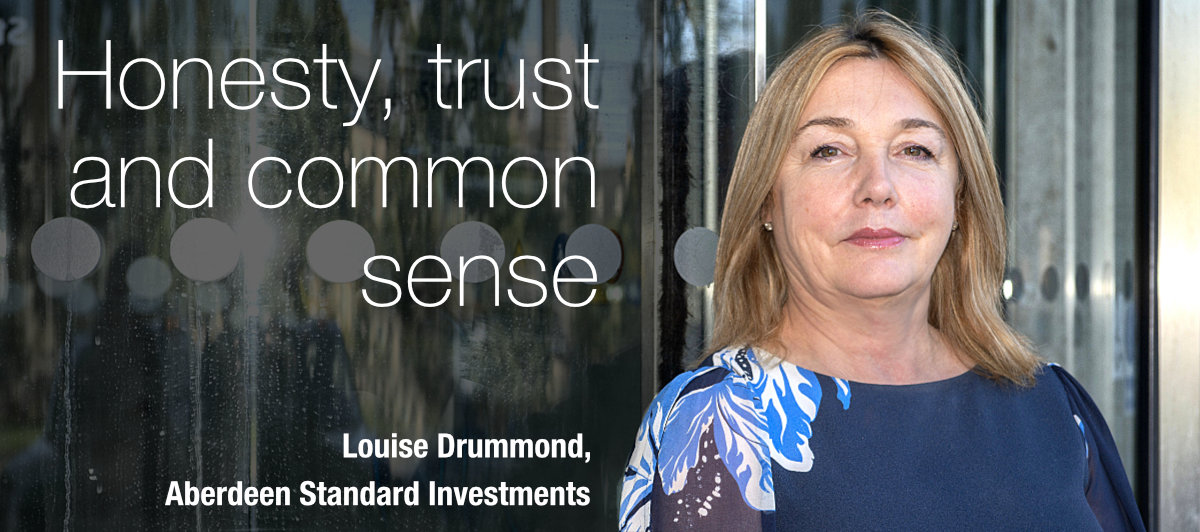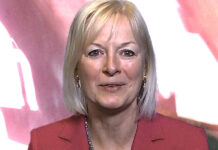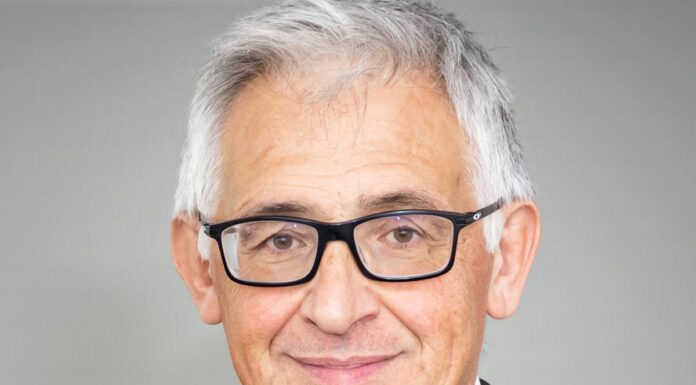As global head of investment execution at Aberdeen Standard, Louise Drummond has risen through the ranks to become an industry leader and ambassador for the buy-side trader.
Louise Drummond was appointed Global Head of Investment Execution at Aberdeen Standard Investments January 2020, where she leads a team of 60 globally in the UK, United States and Asia across all asset classes.
She joined Aberdeen Standard Investments (ASI) as a result of the merger between Aberdeen Asset Management and Standard Life in August 2017, having previously been Co-Head of Investment Execution at Aberdeen Asset Management where she joined from SWIP in 2014. Prior to joining SWIP as head of fixed income and FX trading, Drummond worked for Charles Stanley Sutherlands, where she was a director. She has also worked on the sell-side for Bank of Montreal, Merrill Lynch and JP Morgan Asset Management.
She is a member of the Investment Management Committee and other committees at ASI, and represents Aberdeen Standard at many industry bodies. She sponsors ASI Balance Network which promotes an inclusive working environment of equality for all genders.
Since moving to your new role at the end of last year, what are your long term priorities and strategy?
I am building on solid foundations, the key is to set a strategic direction that is clear and deliverable to the team, which will evolve and adapt to a constantly changing market environment. We are still in the midst of integration. I am taking into account the balance between integration and delivering long term strategic objectives to the business. My first priority was to name my global leadership team. They have got a great blend of experience and expertise, and it is key they also share the strategic vision.
We need to continue investing in our people, as they are our most valuable asset, and will ensure that we maintain our position as a major player in the marketplace. I see automation across the asset classes as key in our industry, we are looking to streamline our investment execution process, so that the dealers can focus on more value add and alpha generation
Where do you see automation and transaction cost analysis (TCA) fitting on to the desk?
Some asset classes are more mature than others, i.e. TCA in FX and equity have been embedded in processes for longer. Fixed income is in its infancy, there are big challenges around pricing still and derivatives is still being developed. Automating more trades frees up time for the dealers to focus on value-add activities, such as getting more involved in the investment process from the start of the trade, taking historical TCA analysis and applying it to current market conditions, to help assess optimum ways of trading and feed that back into the beginning of the investment process.
How is your team structured?
Being a large global asset manager with significant AUM across asset classes, it is important to us to have a global presence with multi-location trading capability; that gives us local expertise across the globe and the flexibility of where and when we want to execute our trades.
The global dealing team is highly experienced and well established. It is structured with my leadership team, that is the regional dealing heads in Asia, US and in EMEA; asset class dealing heads that represent credit and emerging market debt (EMD), derivatives, equities and FX, and underneath this the dealing teams are split into product specialists. There is also a separate treasury team for cash and FX management.
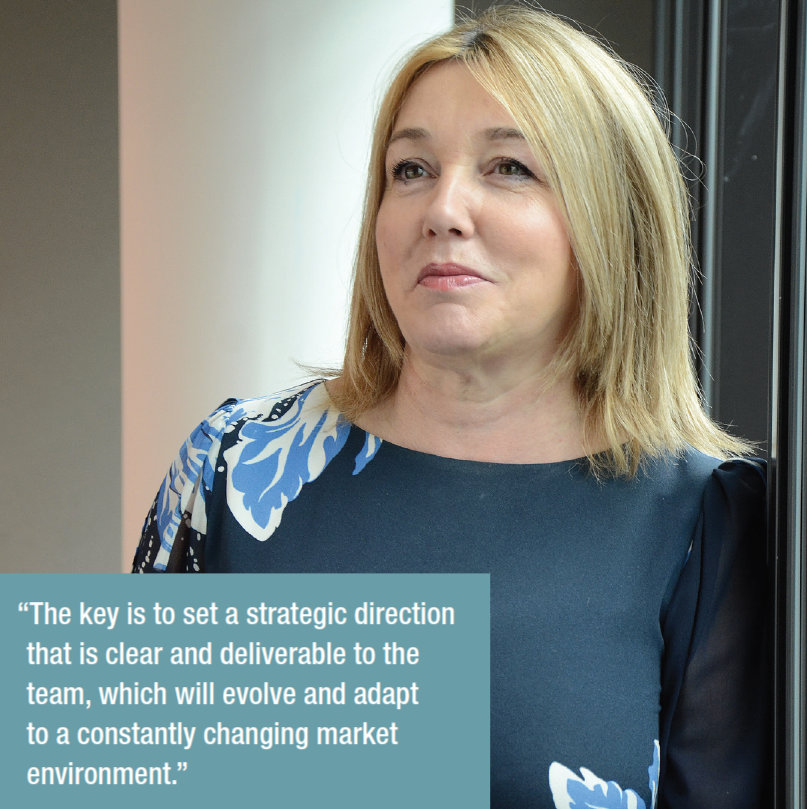
What is the thinking behind the structure?
From a leadership prospective it’s important to me to have diversity of thought and collaboration across the teams globally; the structure works effectively, the teams work well together.
It’s essential that we have experienced specialists across the asset classes and regions with the ability to follow the sun. This ensures continuity of relationships not only within our teams and fund managers but also with our counterparties with whom we have strong long-standing relationships with globally.
Do you see transparency and communication changing?
Covid-19 has brought people much closer together as communicators. That human touch has been good.
We have adapted to work-from-home (WFH), communication has had to change as you are not in the office where you can just shout over to someone. We have more daily calls, Microsoft Teams meetings and Zoom calls than ever before. It’s brought a really strong bond between the teams with messages on market colour, axes, and switches have become more tailored and targeted to fund manager’s needs.
Engagement with the sell side might take slightly longer at times but how we trade has not changed. There is complete transparency on how we handle our trades, we don’t blast our trades around the market, we actually work with banks to get trades done which at times can be over a period of time. We have open and honest relationships.
The ability to handle large trades with minimal information leakage into the market is crucial and having long-standing trusted relationships enables good outcomes for clients.
So trust is based on feedback?
In our broker reviews, the banks consistently comment that they appreciate and respect the way that we handle our trades, it’s very transparent as to what we are trying to do, we are very open and honest. We don’t want to leak information, and banks don’t want that either.
What are the greatest challenges your traders face in the market over the near term, and over the longer term?
Across all asset classes the challenge is liquidity. There is an impact from regulation, such as the Central Securities Depository Regulation (CSDR), which has been delayed but could have the potential to stop banks making prices in markets where liquidity is scarce, which would be coupled with the ongoing reduction of warehousing inventory by banks due to balance sheet constraints. Even in FX, if a bank slips lower in the rankings of pricing of the large flow business it can prove difficult for it to become competitive in pricing again as they are not seeing the flow. We could see more banks step back from certain markets that are not profitable to remain in. With automation in markets increasing, we are also seeing banks reducing numbers of salespeople. Getting the balance right to continue to support high touch trading is really important. That still needs the experienced salesperson.
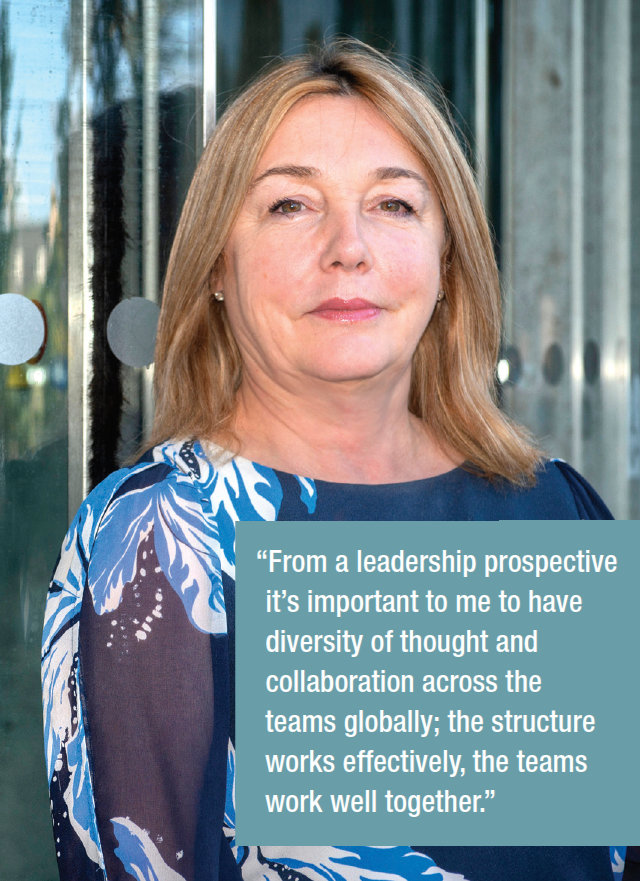
How do you see your role as ambassador for the firm in the wider market, and within the firm for trading?
From a personal perspective having the passion and enthusiasm for dealing and the industry I hope makes me a good ambassador for the firm. Having started my career at 16 years old and finding myself the global head for a large asset manager will, I hope, inspire people to look at careers in the industry which I believe has a lot to offer.
Bringing my experience and expertise to the role of global head enables me to promote dealing within the firm and to the external market.
In the wider market there has been a lot of collaboration across the buy side over the last few years. There has to be a collective approach to get change. There are also the times when you want to work with the sell side as well, to get a shared approach to change standards and principles in the market.
Engagement with regulators at a really early stage is an important issue. The industry as a whole has not really managed to get that balance right. The buy side is still brought into conversations at too late a stage. Regulators need to engage the wider investment community sooner.
CSDR is an example of that issue – I would like to think its delay was because there was a lot of push back from sell and buy side. Emerging markets could potentially have a two-tier pricing mechanism as a result of CSDR.
When you get new offerings of data sources, trading initiatives and broker models, how do you sort the wheat from the chaff?
There has got to be a balance between what’s needed now, whether it is something you are going to embed into what you do, and how it’s going to evolve. Asset managers all have different areas of expertise, so sometimes a solution might not suit us, but it might fit someone else. We are keen to work with vendors where solutions fit.
For trading initiatives we look at what we have currently, whether there is a gap, if the solution offered is going to make a material impact to us, and we will consider the benefits and how it fits into our workflow then balance this with the cost. We are not normally a first-adopter but we are keen to be involved in new trading initiatives.
What do we say about data? It can be very frustrating and can prove to be very expensive. The whole point of MiFID II was to bring greater transparency and access to markets, the one thing we wanted was data and that is what the industry can’t seem to get its hands on, without incurring significant costs. From a transaction cost analysis (TCA) perspective it would be great to have a couple of providers out there that can do all the asset classes really well.
We review our broker lists regularly. For a new broker to get on our list it might be a regional broker that might have access to a niche market that we are trading in, and we can see they are offering liquidity that suits our flows.
For derivatives and FX it’s a more complex process. We have a large and diverse panel, so a potential new counterparty would need to show a very strong proposition and evidence of ranking to be considered.
Is selection a quantitative or qualitative process?
It’s a balance between our counterparties’ capability, trading history and our traders’ market knowledge. Everyone in a seat on our team is very experienced and specialises in their asset class. We don’t have a set percentage [of volume] to trade with any bank, it is about the best outcome for the client.
For electronic trading, a bank can be in the top pack of hit rates on smaller trades, but we might go somewhere else on a larger trade because we know from experience that another bank will deliver a better outcome
Banks often collaborate, do you see buy-side firms potentially doing the same?
We already do have good collaboration but I think there is more work we could do together. This was discussed after the last Fixed Income Leaders’ Summit last year. In the past the buy side have tended to rely on the sell side to deliver solutions for us, we are all aware of the need to do more together. A utility could help in addressing some of the problems.
Do you think the type of broker relationships you need in the future is going to change?
Yes I do, this is currently being driven by banks and platforms with technology moving at great pace. Automation is increasing and new trading solutions are being delivered.
Generally, you are not going to find one bank that offers everything, they are going to become more niche players over the years across asset classes, and then within sub-asset classes. The buy side has to understand, and the banks have to communicate, what markets that they want to be in and are not going to be in.
I think relationships will change because of this, there will be more automated flow and high touch will need the right people in the seats on the sell side. All-to-all will continue to grow as well.
What features would you like to see platforms develop?
What has been working is Liquidnet’s new issuance solution, which will be delivered soon.
On the wish list is better data, we still need proper consolidated tapes across the asset classes and more accurate pricing for more illiquid assets, On the FX side, larger-sized electronic trading for emerging markets would be useful.
More order management and execution management system (OMS/EMS) partnership with execution venues, and OMS/EMS integration with TCA feeds would be great. Seeing local markets via offshore trading capability onto platforms would be good, particularly in Asia.
What are the key elements to helping your teams trade their markets more effectively?
Having a well-resourced, highly experienced local team with market knowledge on trading and market structure. The ability to source liquidity globally, and to be able to pass orders between time zones is key for us. If an order is generated in the UK for which there is liquidity available in another region, we can pass that order on. The ability to utilise internal liquidity opportunities and access to alternative liquidity venues is also key.
We believe in specialist traders focussed on asset classes; it brings expertise and market knowledge both onshore and offshore. Co-ordination is also needed across desks so that we can transact global programmes at the same time.
How do you introduce new elements, like new trading protocols into trading workflows?
We assess if they are useful to us and our clients, and if so build them into our existing processes as an option. Then it is a matter of appropriateness for a trade. For example, today we had a big list of 100-odd trades in fixed income. We knew the market was well bid and they were quite small trades. We were discussing this morning, whether we should go into the market and just execute them line by line, or do a portfolio trade. Our last experience of portfolio trading was better than we would have executed ourselves in the market, because of the house that we engaged with, and how they were positioned. The analysis of what are you looking to do, the timing and our options of doing it, is how we build the protocols into our process. I remember when portfolio trading first came out years ago, I couldn’t see how we would ever use it.
The market is always evolving. So portfolio trading goes into that decision making process as an option, and the more options you have the better outcomes you will get.
Do you think separate high touch and low touch trading desks works?
We did think about that separating out high and low touch. I think it does depend on how your team is structured. When I became global head of trading I thought, what value does a low-touch trader get in doing their job every day? If you are separating an existing team into high touch and low touch, some traders will ask ‘Why am I in the low touch, not high touch team?’ Today our low touch trading still has a human element to it which we are evolving.
You set parameters around trades, the currencies, the nominal’s, the banks it goes to, how many prices you need back, is it inside bid-offer and all those sorts of things. The dealer will assess the trades and markets to ensure suitability and still send out from our OMS.
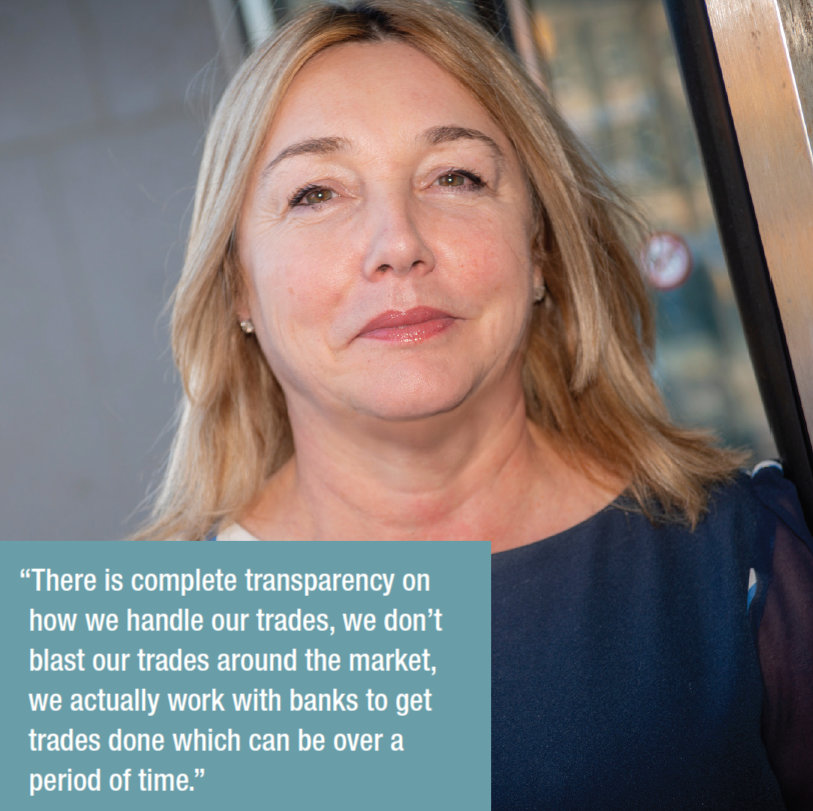
How do you see that evolving given the drive to automate?
Traders are there to trade; that’s their expertise. Some trades can take days and weeks to work, so I need their time focused on the more difficult trades where they are generating optimal outcomes and alpha for our clients.
So It’s key that we continue to develop low-touch trading further to get the noise off the desk. We are still in the early stages of implementing [automation] across the asset classes. I see low-touch trades becoming highly automated, out the door and back in again, but that’s going to take time to do, it could be years, it could be next year, it all depends on technology, which is moving rapidly in this area.
Are there any gaps in the data you need at the moment?
The biggest gaps in the data at the moment are in the over-the-counter (OTC) derivatives space – data there is very poor. Liquidity scoring in EM debt markets can be a bit hit or miss. To get more accurate end of day pricing for less liquid assets would be very valuable, and important from a TCA and valuation prospective.
©The DESK 2020
©Markets Media Europe 2025














